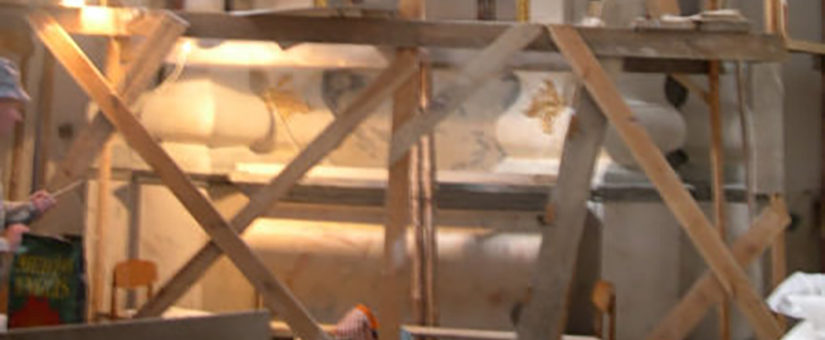AT PRESENT, our most significant project is the distrubution of our recently completed documentary film, Red Terror on the Amber Coast. This film describes the Soviet’s use of state sponsored terror, in the hands of the KGB and its predecessors, as as the principal means to impose Soviet rule on the Baltic Republics and their people during the years 1939-1953. The film focuses principally on Lithuania as an exemplar of Soviet repression from the Molotov—von Ribbentrop Pact to the death of Stalin. Through interviews with eminent historians in Lithuan and the United States; with commentaries by President Valdas Adamkus of Lithuania and Vytautas Landsbergis, the first chief of state of free Lithuania; and especially through vivid interviews with KGB prisoners, resistance fighters, deportees, and slave laborers—men, women and even children—who worked along the Arctic Coast, the forests of Siberia, and mines of Magadan, we picture the systematic imposing of a social collectivist, single party, police state, steeped in fear and terror on democratic, western republics. The testimony of these survivors present a picture of the Soviets’ calculated attempts to crush the Baltic peoples, their countries and their culture. Through the willing assistance of the leading archivists in Vilnius and Riga, we have been able to assemble extensive archival footage and still photographs from the period. All together they make up the resources necessary to tell the story of the struggle between Stalin’s police to impose a totalitarian and collectivist rule and culture on the independent and democratic Republics, and the struggle to resist the Soviet’s forced occupation.
This project has been undertaken by the joint team of a writer and a film-maker, Ken Gumbert, the film-maker, and David O’Rourke, the writer and editor who is also director of the Tatra Project. Each of us has a half-dozen years experience in Eastern Europe, and each has a well-established track-record in his own field. Ken Gumbert’s film, Saving Grace, won the 2005 Gabriel Award for the best documentary shown on national television. Both are Dominicans. David O’Rourke’s books are principally in the field of cultural history.
The project has been in the works since 2001. The intervening years of on-site research and preparations led to the actual filming of interviews in June of 2006. The interviews are with partizans and survivors, leading figures in the country including Vytautas Landsbergis and President Adamkus, archival newsreel film footage, and still photographs. Most of the film resources are from the archives of the KGB museum and National Archives in Vilnius, and the Occupation Museum and State Film Archives in Riga. We are indebted to their talented and very professional staff, who have been most supportive of the project.
The project has been undertaken by the co-producers who have no Lithuanian connections, but who were startled in the course of their work in Eastern Europe—Ken Gumbert working a film on the Soviet takeover in Czechoslovakia, and David O’Rourke teaching in Vilnius University—to discover the extent of the Soviets’ use of terror in the Baltics and how little is known in the West about the terrible suffering of the people in the Baltics under the Soviets. And once with that knowledge they decided that it was both a historic and a human story that merited the telling.
More information on the film can be found on the webpage of the production company, Domedia Productions of Newport, Rhode Island—the producer of the film. Domediaproductions.org. The full length film can also be viewed on this site.
RED TERROR ARCHIVE
At present another major project is in the works. The 40-some hours of filmed interiews, along with the many hours of historic newsreels from the 1930s and 1940s, mostly from Eastern European Archives, as well as the 800 or so historical photographs of life in the Soviet prisons, gulags, forced labor camps, and collective farms form a major part of the historic record. To make these available in an orderly and thematic manner to the public, we are setting up an “Archive raisoneé,” a visual resource on the Internet where students of history will be able to see and hear people describe aspects of soviet rule as they lived it. Red Terror Archive will not be a book on the Internet; rather, it will be a visual resource with scripted explanations.
